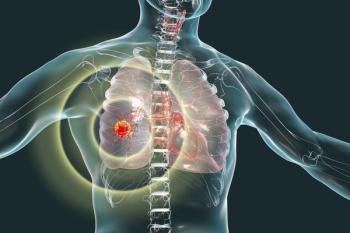
Experts Highlight Guidelines on Antiviral Use in Prevention of Varicella-Zoster Virus Reactivation in Myeloma

Prescription of an appropriate duration of antivirals for the prevention of Varicella-Zoster virus reactivation in patients with multiple myeloma has notable importance, with experts emphasizing a need to adhere to treatment guidelines.
Findings from a retrospective study in Japan highlight the importance of using prophylactic antivirals for the correct duration to prevent Varicella-Zoster virus reactivation (VZVr) in patients with multiple myeloma, further confirming the importance of adhering to guidelines for the prevention of the virus.
Over the course of the research, 39 episodes of VZVr were observed in 37 out of 118 patients studied. When assessing the proportion of prophylactic antiviral prescriptions and National Comprehensive Cancer Network (NCCN) clinical guideline compliance, investigators reported rates of 76% and 30% in the VZVr cohort compared with 88% and 74% in the non-VZVr cohort, respectively. Moreover, findings from a multivariate analysis indicated that NCCN guideline compliance was the only independent risk factor for VZVr (P = .0017).
Investigators launched a study to assess the incidence of VZVr and possible risk factors, including consideration for prescription status of antiviral agents throughout the past decade. The study featured patients diagnosed with multiple myeloma who were treated with therapies such as proteasome inhibitor. Additionally, treatment at the National Hospital Organization Tokyo Medical Center for a minimum of 3 months between July 2009 to June 2019 was required.
“To the best of our knowledge, this is the first report discussing the usefulness of compliance with the NCCN [guidelines] in preventing VZVr using real-world data in Japan. In addition, this study was more detailed than previous reports, as it investigated not only the frequency of VZV reactivation after [proteasome inhibitor] treatment, but also anticancer drug treatment for [multiple myeloma] at the onset, treatment for [herpes zoster], and the frequency of [postherpetic neuralgia] as a sequela, through long-term observation,” the investigators wrote.
One hundred and twenty-two patients underwent treatment with a proteasome inhibitor, of whom 4 were excluded due to short treatment duration. Patients were followed for a median of 44.3 months (interquartile range, 21.2-67.6). Differences in baseline characteristics were not significant, according to investigators. Patients in the VZVr (n = 37) and non-VZVr groups (n = 81) had a median age of 65 years and 68 years, respectively. Patients had stage II disease and IgG subtyping most frequently. Almost all patients had previously received treatment with bortezomib (Velcade) and dexamethasone, and more than 70% of patients in both arms received lenalidomide (Revlimid).
The most common prophylactic antiviral prescribed was acyclovir at a dose of 200 mg per day in 68% of patients in the VZVr group and 80% of patients in the non-VZVr group. Twenty-four percent of patients in the VZVr group and 12% in the non-VZVr group did not receive prophylactic antiviral medications. Investigators also reported that the median proportion of prescriptions for antivirals was 42% and 100% in the VZVr and non-VZVr cohorts, respectively, over the course of the study.
“We conducted a detailed analysis of VZV reactivation in patients [with multiple myeloma] with a history of [proteasome inhibitors] treatment in the past 10 years, while taking into account the prescription status of prophylactic antivirals. In addition to prescribing prophylactic antivirals, it may be important that they be used for an appropriate period in accordance with the guidelines,” investigators concluded.
Reference
Ohashi Y, Yatabe M, Niijima D, et al. Importance of compliance with guidelines for the prevention of Varicella-Zoster virus reactivation in multiple myeloma. In Vivo. 2021;35(6):3289-3296. doi:10.21873/invivo.12624
Newsletter
Stay up to date on recent advances in the multidisciplinary approach to cancer.


















































































